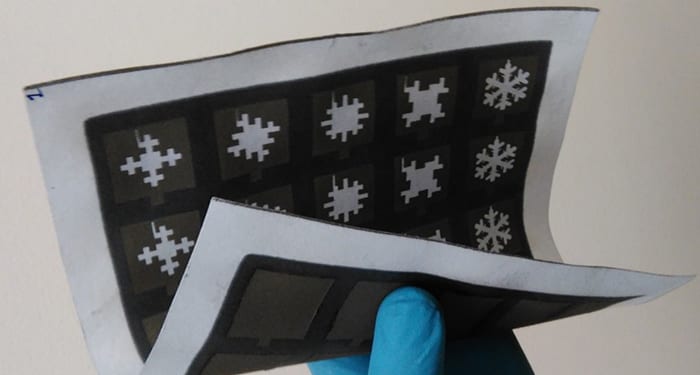Researchers at the State University of New York-Binghamton have constructed a stackable, 3D-foldable bacteria-powered battery within a single sheet of paper for on-chip, disposable paper-based electronics.
Paper electronics, also known as papertronics, is a technology whereby electronic components are printed directly on a paper substrate. When additional elements, such as fluidics, optical materials or sensors, are integrated into the paper a wealth of applications can be realized. These include point-of-care diagnostics, flexible displays, and environmental monitoring.

One of the greatest challenges for practical applications is to incorporate a suitable power source. Ideally, the devices should be self-powered so they can be used in real-world conditions, where people often lack access to a reliable external electricity supply. Much effort has been devoted to paper-based power sources, for example, lithium ion batteries, supercapacitors and galvanic cells. However, these technologies are not viable in resource-limited environments because they need to be charged or require a noble chemical electrolyte for activation.
Microbial fuel cells offer an attractive alternative. A microbial fuel cell typically comprises anode and cathode chambers separated by an ion exchange membrane. The two electrodes are connected via a conductive wire, which transports electrons generated extracellularly by bacterial metabolism. Seokheun Choi and co-workers have previously fabricated paper-based microbial fuel cells in which electricity is generated from a bacteria-containing liquid derived from wastewater. Rapid power generation is possible using only a small volume of liquid. However, many paper layers are required in order to include all the components of the fuel cell. This significantly complicates fabrication and depresses power generation.
Choi has now overcome this hurdle by integrating the entire microbial fuel cell in a single sheet of paper using an innovative combination of materials and device design. The researchers printed wax onto the bottom side of chromatography paper. The wax acts not only as the ion exchange membrane but also serves to strengthen the paper while retaining its flexibility. A nickel and polypyrrole/carbon black anode was then prepared on top of the paper and an activated carbon based air-cathode was printed on the bottom, over the ion exchange membrane. When a small amount of bacterial inoculum is dropped onto the central inlet of the device it spreads over the anode and through the paper reservoir and power is generated.
This innovative design allows not only rapid and cost-effective fabrication but also considerable flexibility: Single sheets of the biobatteries may be stacked or folded into the desired 3-dimensional configuration. Applications are anticipated in remote and resource-limited regions where disposable self-powered papertronics are required.

















